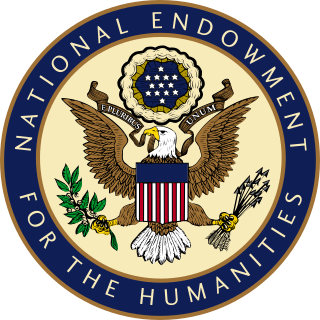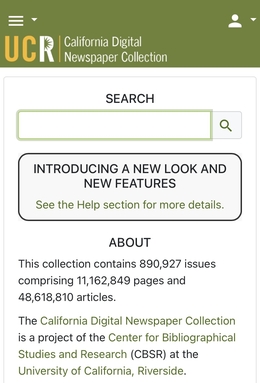Related Research Articles
The Perseus Digital Library, formerly known as the Perseus Project, is a free-access digital library founded by Gregory Crane in 1987 and hosted by the Department of Classical Studies of Tufts University. One of the pioneers of digital libraries, its self-proclaimed mission is to make the full record of humanity available to everyone. While originally focused on the ancient Greco-Roman world, it has since diversified and offers materials in Arabic, Germanic, English Renaissance literature, 19th century American documents and Italian poetry in Latin, and has sprouted several child projects and international cooperation. The current version, Perseus 4.0, is also known as the Perseus Hopper, and is mirrored by the University of Chicago.

Digitization is the process of converting information into a digital format. The result is the representation of an object, image, sound, document, or signal obtained by generating a series of numbers that describe a discrete set of points or samples. The result is called digital representation or, more specifically, a digital image, for the object, and digital form, for the signal. In modern practice, the digitized data is in the form of binary numbers, which facilitates processing by digital computers and other operations, but digitizing simply means "the conversion of analog source material into a numerical format"; the decimal or any other number system can be used instead.

The National Endowment for the Humanities (NEH) is an independent federal agency of the U.S. government, established by the National Foundation on the Arts and the Humanities Act of 1965, dedicated to supporting research, education, preservation, and public programs in the humanities. The NEH is housed at 400 7th St SW, Washington, D.C. From 1979 to 2014, NEH was at 1100 Pennsylvania Avenue, N.W., Washington, D.C., in the Nancy Hanks Center at the Old Post Office.
The Star Democrat is an American newspaper published and mainly distributed in Easton, Maryland, in Talbot County, as well as in the surrounding counties of Caroline, Dorchester, Queen Anne's and Kent. The Star Democrat is published on Wednesdays, Thursdays, Fridays and Sundays. The Tuesday edition is currently digital only.
The Text Creation Partnership (TCP) is a not-for-profit organization based in the library of the University of Michigan since 2000. Its purpose is to produce large-scale full-text electronic resources on behalf of both member institutions and scholarly publishers, under an arrangement calculated to serve the needs of both, and in so doing to demonstrate the value of a business model that sees corporate and non-profit information-providers as potentially amicable collaborators rather than as antagonistic vendors and customers respectively.
The United States Newspaper Program (USNP) is a national effort among the individual states and the US federal government to locate, catalog, and preserve on microfilm, newspapers published in the United States up to the present time. Funding is provided by the National Endowment for the Humanities, and technical assistance is provided by the Library of Congress. The program has since been enhanced by the National Digital Newspaper Program. The program began in 1982 and was estimated to be completed in 2007. As of 2004, $51.1 million in federal and $19.3 million in state funding had been raised.
The Brittle Books Program is an initiative carried out by the National Endowment for the Humanities at the request of the United States Congress. The initiative began officially between 1988 and 1989 with the intention to involve the eventual microfilming of over 3 million endangered volumes.
The Digital Library of Georgia (DLG) is an online, public collection of documents and media about the history and culture of the state of Georgia, United States. The collection includes more than a million digitized objects from more than 200 Georgia-related collections. The DLG connects users to content from 65 libraries, archives, museums, historical societies, and other institutions, as well as 100 agencies of state government. It can be searched or browsed through the Digital Library of Georgia website.

The Florida Digital Newspaper Library provides access to the news and history of Florida through local Florida newspapers. The Florida Digital Newspaper Library is supported by the University of Florida's George A. Smathers Libraries and hosted in the University of Florida Digital Collections funded partially by grants and sources, including Florida's Library Services and Technology Act (LSTA) Grants Program, the National Endowment for the Humanities' National Digital Newspaper Program, the Institute for Museum and Library Services, the University of Florida, by Florida Heritage Project funds from the University of North Florida and the University of South Florida, and with the assistance of digital library endowment from the Estate of the late Governor and Mrs. C. Farris Bryant.
Chronicling America is an open access, open source newspaper database and companion website. It is produced by the United States National Digital Newspaper Program (NDNP), a partnership between the Library of Congress and the National Endowment for the Humanities. The NDNP was founded in 2005. The Chronicling America website was publicly launched in March 2007. It is hosted by the Library of Congress. Much of the content hosted on Chronicling America is in the public domain.
The Core Historical Literature of Agriculture (CHLA) is the name of both a digital preservation project and the resulting digital library which began at Cornell University's Albert R. Mann Library in 1994. It is notable as an early digital library and, unlike later book digitization projects by Google and Microsoft, where the focus is mainly on the wholesale scanning of massive numbers of titles, its collection follows a scholarly selection methodology with a specific subject focus. Although CHLA is a much smaller collection than that of Google Books Library Project, for example, all of its titles are considered academically and historically important, and all texts in CHLA are freely accessible.
The Illinois Newspaper Project (INP) began as part of the United States Newspaper Program (USNP), a cooperative effort between the states and the federal government designed to catalog and preserve on microfilm the nation's historic newspaper heritage. The USNP was funded by the National Endowment for the Humanities (NEH) and administered by the Library of Congress, who are currently funding the National Digital Newspaper Program (NDNP), of which the INP is also a part.
Archives West is an online catalog of descriptive information about the archival collections at various institutions in the western United States (Idaho, Montana, Oregon, Alaska, Utah and Washington). It was established in 2005, and is a program offering of the Orbis Cascade Alliance. From 2005 to 2015, the site was known as Northwest Digital Archives (NWDA); the name changed as part of a substantial redesign to better describe the site's content and scope.

The Digital Public Library of America (DPLA) is a US project aimed at providing public access to digital holdings in order to create a large-scale public digital library. It officially launched on April 18, 2013, after two-and-a-half years of development.


The California Digital Newspaper Collection (CDNC) is a freely-available, archive of digitized California newspapers; it is accessible through the project's website. The collection contains over six million pages from over forty-two million articles. The project is part of the Center for Bibliographical Studies and Research (CBSR) at the University of California Riverside.
Fultonhistory.com is an archival historic newspaper website of over 1,000 New York newspapers, along with collections from other states and Canada. As of February 2018, the website had almost 50 million scanned newspaper pages.

The Louisiana Endowment for the Humanities is a nonprofit organization dedicated to furthering the education of residents of the state of Louisiana. In its mission, the Louisiana Endowment for the Humanities pledges to provide access to and promote an appreciation of the history of Louisiana and its literary and cultural history. It was founded in 1972 as a result of initial funding by the National Endowment for the Humanities.
Mass digitization is a term used to describe "large-scale digitization projects of varying scopes." Such projects include efforts to digitize physical books, on a mass scale, to make knowledge openly and publicly accessible and are made possible by selecting cultural objects, prepping them, scanning them, and constructing necessary digital infrastructures including digital libraries. These projects are often piloted by cultural institutions and private bodies, however, individuals may attempt to conduct a mass digitization effort as well. Mass digitization efforts occur quite often; millions of files are uploaded to large-scale public or private online archives every single day. This practice of taking the physical to the digital on a mass realm changes the way we interact with knowledge. The history of mass digitization can be traced as early as the mid-1800s with the advent of microfilm, and technical infrastructures such as the internet, data farms, and computer data storage make these efforts technologically possible. This seemingly simple process of digitization of physical knowledge, or even products, has vast implications that can be explored.
References
- ↑ "National Digital Newspaper Program". Archived from the original on April 17, 2007. Retrieved April 17, 2007.
- ↑ Humanities, National Endowment for the. "Chronicling America | Library of Congress". chroniclingamerica.loc.gov. Retrieved February 1, 2023.
- ↑ "Library of Congress, National Endowment for the Humanities Celebrate Millionth Page in Chronicling America Program". Library of Congress. June 16, 2009. Retrieved July 24, 2009.
- ↑ "The U.S. Newspaper Program – Scope, Achievement, and Progress". Archived from the original on September 28, 2007. Retrieved May 1, 2007.
- ↑ http://www.lib.utah.edu/digital/unews/
- ↑ "Ndnp: Technical Notes On Formats For Digital Reproductions" (PDF). Retrieved February 1, 2023.
- ↑ "A Retiree Digitizes 27 Million Old Newspaper Pages in His Living Room (And Libraries Fight to Catch Up)". May 18, 2014.